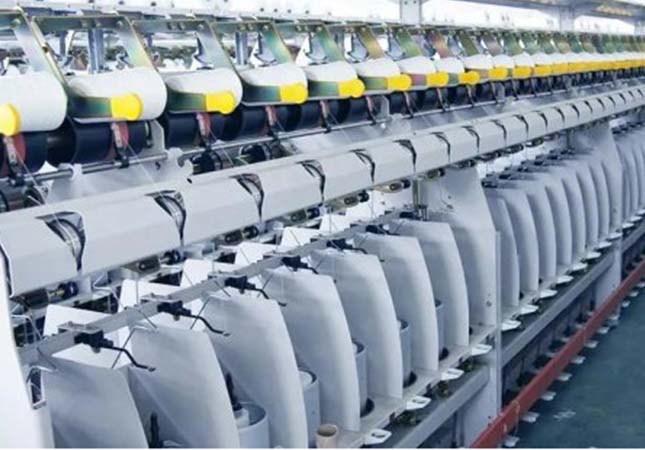The warp tying machine is primarily used to tie together yarns that have been broken during the weaving process or to join new yarns to the existing warp on a weaving loom, and now it is used to maintain the integrity of the fabric by ensuring that the yarns are securely tied together. This blog will explore the process of warp knitting and the reasons why we need warp knitting in the textile industry.

Warp Knitting Process
Warp knitting is a type of knitting process used in the textile industry to create fabrics with distinct physical properties, such as stability and elasticity. The warp knitting process is done using a machine called a warp tying machine. Here is an overview of the warp knitting process.
1. Yarn preparation
Before the knitting process can begin, the yarn is prepared by winding it onto a warp beam. The yarn is wound onto the beam in a parallel fashion, which is called the warp.
2. Setting up the warp knitting machine
The warp beam is mounted onto the machine, and the machine is set up for knitting by threading the yarn through the needles and other machine components.
3. Knitting
The knitting process starts by feeding the yarn through the needles, which are arranged in a row. The needles move in a vertical direction, and as they move, they form a loop around the yarn, creating a stitch. The knitting machine also has a guide bar that moves horizontally across the needles, allowing the yarn to be interlaced in a specific pattern.
4. Fabric formation
As the needles and guide bar work together, they create a fabric with a series of interconnected loops. The fabric is held in place by a series of sinker bars that push the fabric down after each row of loops is formed.
5. Finishing
Once the fabric is formed, it is removed from the machine and may undergo further finishing processes such as washing, dyeing, or printing.
The Benefits of the Warp Tying Machine
The benefits of the warp tying machine in the textile industry are significant, there are some of the advantages of it.
1. Increased efficiency
The warp tying machine helps to prevent production downtime, reducing the time it takes to complete the knitting process, so it is beneficial for increasing efficiency, reducing costs, and boosting productivity.
2. Improved quality
By automating the knotting process, the warp tying machine ensures that the yarn is tied together securely and with minimal waste, resulting in higher-quality finished products that are less likely to have flaws or defects.
3. Versatility
The warp tying machine can be programmed to adjust to different yarn thicknesses and types, making it a versatile piece of machinery suitable for a range of textile production needs.
4. Labor savings
The use of the warp tying machine eliminates the need for manual labor in tying broken yarn ends together, reducing production costs and increasing profits.
5. Competitive edge
By incorporating the latest technology, textile manufacturers can produce high-quality fabrics at a faster pace, giving them a competitive edge in the market.
6. Reduced waste
The warp tying machine minimizes yarn waste by tying together broken yarn ends, which would otherwise be discarded, resulting in a reduction in material costs.
SUNTECH Warp Knotting Machine(Warp Tying Machine)
There are features of the SUNTECH ST-WKM-II warp knotting machine.
1. The machine has a running speed of up to 400 rpm.
2. The actual splitting speed is 50%-100% higher than before, depending on the state of the yarn.
3. The tissue benchmark can be split at a ratio of either 1:1 or 2:2 by switching a switch.
4. A single handle is used to adjust the warp tension.
5. A special warp separation device is utilized for the corresponding tell operation.
6. The main part is driven by a cam, which provides stability and ease of adjustment.
7. The process of exchanging the yarn splitting needle is simple and completed in one step.
Conclusion
Overall, the use of the warp tying machine in the textile industry has had a significant impact on the production process, leading to increased efficiency, improved quality, and reduced waste. As technology continues to advance, we can expect to see further innovations in textile production, ultimately benefiting both the industry and the end consumer.
SUNTECH’s products cover the textile manufacturing and handling process of almost fabric types, in which pinking machine, non woven machine, beam truck, meltblown machine, fabric cutting machine, motorized beam trolley, beam storage, warp tying machine are the most popular machines and material handling equipment.
SUNTECH Textile Machinery leads the textile industry with our innovation and experience! Quotes and Cooperation are Highly Welcome!




